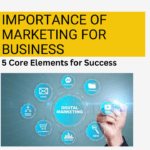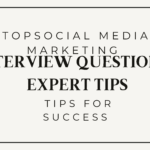What Is a Marketing Strategy?
A marketing strategy isn’t just a plan; it’s the heartbeat of any successful business. It’s the blueprint that guides how a company presents its products, services, or brand to the world. A well-crafted marketing strategy does more than just attract customers—it builds trust, creates lasting relationships, and transforms one-time buyers into loyal advocates. When executed effectively, it aligns with business goals and leverages market research, customer insights, and promotional tactics to carve out long-term success.
Key points:
- A marketing strategy is the foundation of how a business reaches and engages with its audience.
- It helps brands stand out from the competition and communicate their unique value.
- A great strategy integrates both digital and traditional marketing channels.
- The best marketing strategies evolve over time, adapting to new trends and consumer behaviors.
Understanding Marketing Strategies
Imagine trying to navigate a new city without a map—you might eventually reach your destination, but not without frustration and wrong turns. That’s what running a business without a marketing strategy feels like. A strong marketing strategy provides a clear direction, ensuring that branding, messaging, and customer interactions remain consistent. The result? Strong brand awareness, customer trust, and long-term loyalty.
MUST READ: Importance of Marketing for Business: 5 Core Elements for Success
A Look Back: The Evolution of Marketing Strategies
Marketing has come a long way. In the early 1900s, it was all about mass production and distribution—sell as much as possible to as many people as possible. Then came the realization that customers weren’t just faceless buyers; businesses began segmenting markets and tailoring their messages to different groups. With the rise of the digital age, everything changed. Data-driven marketing, personalization, and omnichannel engagement became the new norm, allowing businesses to connect with customers in ways never before possible.
- In 2023, global digital ad spending surpassed $600 billion, emphasizing the shift towards online marketing.
- A study by HubSpot revealed that 70% of marketers actively invest in content marketing as part of their strategy.
Marketing Strategies vs. Marketing Plans: What’s the Difference?
Think of a marketing strategy as the big-picture vision—it defines where a business wants to go and how it plans to get there. A marketing plan, on the other hand, is the step-by-step action plan that brings the strategy to life. The strategy sets the foundation, while the plan outlines the specific tactics, timelines, and resources needed to execute campaigns successfully.

How to Build a Winning Marketing Strategy
Creating an effective marketing strategy is like assembling a puzzle—each piece must fit perfectly to reveal the full picture. Here’s how businesses can develop a powerful strategy:
1.Define Clear Goals
- Whether it’s increasing brand awareness, boosting sales, or growing a loyal customer base, businesses need clear and measurable objectives.
- Companies with clearly defined marketing goals are 376% more likely to achieve success, according to Co Schedule.
2.Know Your Audience
- Identifying the ideal customer involves understanding their demographics, preferences, pain points, and buying behaviors.
- Research shows that businesses that use customer personas experience a 171% increase in marketing-generated revenue.
3.Craft a Compelling Message
A strong marketing message speaks directly to customer needs and highlights the unique benefits of the product or service.
4. Allocate Resources Wisely
- Smart budgeting ensures the right balance between advertising, content creation, and other marketing initiatives.
- According to the CMO Survey, companies allocate 10.9% of their revenue to marketing on average.
5. Choose the Right Channels
- Digital platforms like social media, email, and SEO, combined with traditional methods like print or TV ads, help reach the target audience effectively.
- Businesses using omnichannel marketing strategies retain 89% of their customers, compared to 33% for those with a single-channel approach.
Measuring Success: Tools & Techniques
To ensure a marketing strategy is working, businesses must track key performance indicators (KPIs) like conversion rates, customer acquisition costs, and return on investment (ROI). Regular analysis helps in refining strategies and making necessary adjustments to improve results.
1.Email marketing
has an ROI of $42 for every $1 spent, making it one of the most cost-effective marketing strategies.
2.Social media engagement
has increased by 58% in the last two years, proving its effectiveness in brand building.
MUST READ: what is the salary of company secretary, Roles, Benefits & Growth
The Four Ps of Marketing Strategy
At the core of every marketing strategy are the Four Ps:
1.Product
It’s not just about selling an item; it’s about solving a problem and delivering value
2.Price
Setting the right price involves understanding perceived value, market demand, and competitive positioning.
3.Place
Choosing the right distribution channels ensures the product reaches the right people at the right time.
4.Promotion
From digital ads to influencer collaborations, promotion creates brand awareness and drives engagement.
What Does a Strong Marketing Strategy Look Like?
A well-defined marketing strategy includes market research, audience insights, branding guidelines, messaging frameworks, budget allocation, and a roadmap for execution. It serves as a guiding force, helping businesses maintain consistency in their marketing efforts while adapting to new opportunities.
Marketing Strategy vs. Marketing Plan: A Final Thought
While a marketing strategy lays out the vision, a marketing plan maps out the journey. Both are essential for business growth, ensuring that every marketing move is purposeful and aligned with long-term goals.
The Bottom Line
A great marketing strategy isn’t just about selling—it’s about storytelling, connection, and creating value. Businesses that invest in a well-thought-out strategy can attract and retain customers, build a strong brand reputation, and stay ahead in an ever-evolving market. The key is to keep learning, adapting, and refining the approach to meet the changing needs of the audience. Because, at the end of the day, marketing isn’t just about products—it’s about people.
Riyo is a Digital Marketing expert with specialization in SEO and Market Analysis. He has hands-on experience in keyword research, on-page & off-page SEO, and data-driven marketing strategies. Riyo helps businesses boost their online visibility and grow through smart digital tactics.


